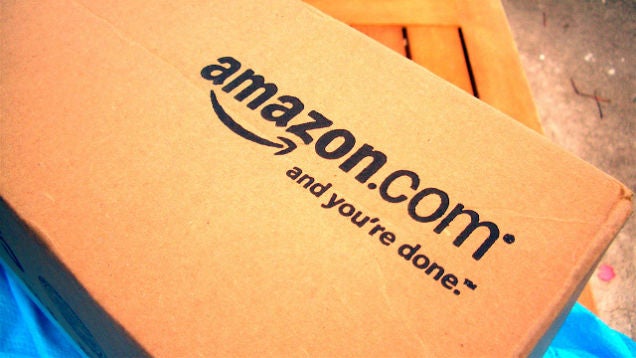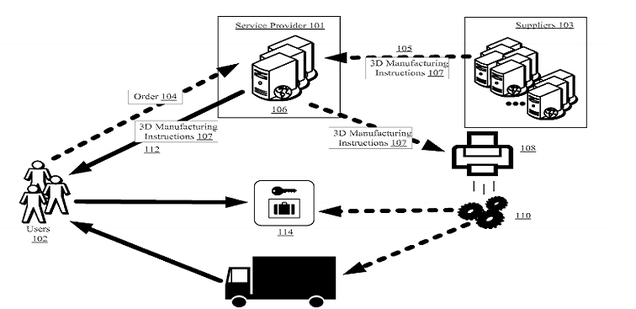4 reasons why cloud spending is set to explode this year

The Gartner Worldwide IT Spending Forecast report predicts fiercer competition in 2015 between traditional on-premise software vendors, pushing expenditure up to $3.8 trillion. It says that spending in the enterprise technology market will reach $335 billion this year, increasing by 5.5 percent over 2014’s figures. Traditional vendors are now having to increasingly compete with cloud-based software-as-a-service (SaaS) offerings, lower prices and vendor software consolidation.
These trends have pushed traditional on-premise software vendors to increasingly offer more discounted cloud services to counter the onslaught by the incumbent SaaS players.
Bimodal IT
Amidst this competitive environment, organizations are looking more strategically at their IT expenditure. They are no longer just seeing IT -- including the cloud -- as means of creating cost-efficiency gains.
Gartner’s research director for cloud computing, Gregor Petri, says that there is also a move towards bimodal IT, which is driving spending: "In Mode 1 companies are trying to renovate the core of their IT, and in Mode 2 they are exploring new things".
He believes that the first mode is about efficiencies and the second about improving the customer experience, culminating in growth for their own organizations. In the second mode organizations want to go after new customers, new products, new solutions and new opportunities. "Companies are investing in IT again -- that’s true, but many vendors are still in the mode of increasing efficiencies in existing processes using Mode 1 of cloud computing, and yet we now see most firms concentrating on Mode 2", he explains.
These two modes are challenging from an internal perspective because organizations often have to align themselves with both of them.
To find new opportunities in Mode 2 they need to be bold rather than afraid. This is because they will either need to change their approach, their goals or outcomes half-way through a project. Mode 1 is very different because organizations will often know from the outset what they want to achieve, and it’s all about doing that efficiently.
Spending ratios
In terms of the ratio of clouding spending versus traditional IT expenditure, Karl Deacon -- Chief Operating Officer at Canopy -- says that the Atos cloud, "has shown that the percentage of contracts requiring or including digital or cloud solutions in outsourcing deals more than doubled in 2014 compared to 2013".
The Atos cloud is a joint venture backed by Atos, VMware and EMC. Atos claims on its website that it doesn’t: "sell widgets, and we don’t theorize about the future…as business technologists with a pure client focus, we are orchestrators who can put your entire cloud puzzle together".
In Deacon’s view, this signals a more aggressive growth in demand for cloud solutions and services in comparison to previous years. "Clients are already spending about 20 percent of their IT budget on cloud technologies or services, and this spending sometimes falls outside of their organizations’ central IT budget", he explains.
Deacon expects this trend to continue, rising by about 10 percent of the overall IT budget per annum. This is due to factors such as the rising prevalence of shadow IT and digital transformation across departments.
Hybrid cloud matures
One other important trend forecast this year is the rise of the hybrid cloud, which is expected to reach maturity in 2015 and so it is being seen as the way forward. Cap Gemini is seeing this happen, and spending on it is already increasing.
Paul Hammond, the company’s senior vice-president and chief technology officer, says: "The underlying architecture required offers an option to use Amazon Web Services (AWS), Azure, etc…and when you get into some of the production systems, the security and data sovereignty elements you can see that it either drives the private cloud or it sits within an organization’s datacenter".
He adds that this doesn’t mean that an organization wouldn’t want to use the public cloud because even if it does sit within traditional IT architecture, the cloud may at some point still be used. This may not only involve a public cloud, but much depends on factors such as data criteria and security, which are two elements that are driving the hybrid option within the same architecture.
Buying a complete service
Regarding the threat that SaaS software poses to traditional software vendors, Petri says customers don’t just buy the application functionality from a cloud provider. They are in fact buying a complete service: the underlying middleware, operating systems, hardware and many other things that would traditionally be bought from other kinds of IT vendors.
"In most cases, if you buy SaaS from a SaaS vendor, you don’t have any choice about the underlying layers, so to some extent it offers less choice and it increases your dependency on the provider", he explains.
Third parties may also not be able to sell any additional software, hardware other tools for the underlying layers -- a market which he says has traditionally been bigger than the market for the application itself.
Lock-ins can limit customers’ choice about how and where they spend their budgets to just one vendor -- making it harder for traditional vendors to compete while in effect restricting customers’ choice about what systems they’d ideally like to purchase beyond what a SaaS vendor offers.
Cloud alternatives
Due to the large number of cloud providers locking in customers, many on-premise third party software providers are being forced to offer a SaaS alternative to their on-premise and traditional license-based solutions.
To what extent is this happening? "The impression I have, after operating in this field for the past 10 years, is that -- apart from the niche software providers who offer highly specialized applications -- most vendors are moving and many are already there in one form or another", claims Deacon.
He nevertheless feels that it’s hard to offer an exact percentage of how many vendors are making the transition towards offering SaaS products and services, and particularly as even Oracle and SAP tend to still operate using traditional software licensing models. Yet vendors like them are also heavily invested in cloud software businesses -- even if they haven’t moved towards adopting a cloud user licensing model as the bulk part of their business.
Predicting 2015
Hammond predicts that there will be a natural uptake because of the benefits of SaaS.
Hybrid cloud environments will pose some challenges that revolve around end-to-end operations. There is a need to tie them up with traditional models. Organizations will otherwise have no idea about reporting, SLAs and problem resolution.
"Some vendors will improve their ability to monitor, provide tools and report -- at the end of the day it’s about integrating the stack rather than just selling you a piece of software that does the analytics or something else", he concludes.
So there will be some challenges, but spending will increase and competition will too because, as Hammond puts it, demand is only getting harder and faster, and so the use of SaaS, public, private and hybrid clouds will increase to fulfill this requirement.
Bimodal IT will be the key driver of cloud spending over the course of the year because organizations are looking more strategically at how they spend their budgets. They now want to focus on delivering a better customer experience; to reduce the time to market of a product, application or service.
Ultimately what drives their spending is a need to increase their profitability rather than just focus on cost-efficiencies.
An improved perception of cloud security will also drive spending; and this why customers will increasingly spend more on SaaS -- and in particular on hybrid cloud.
Published under license from ITProPortal.com, a Net Communities Ltd Publication. All rights reserved.
from ffffff http://feeds.betanews.com/~r/bn/~3/uXmE-DolHv4/
via IFTTT
You'd Never Guess That This Space-Age Gadget Was a Microscope

This beautiful piece of shiny scientific instrumentation is a brand new class X-ray microscope sitting inside a vacuum chamber at Brookhaven National Laboratory. Things have sure changed since we were at school.
More precisely, its'a a multi-layer Laue lens module inside the vacuum chamber of the microscope installed at the Hard X-ray Nanoprobe beamline at National Synchrotron Light Source II. And what is it good for? BNL explains:
Delivering the capability to image nanostructures and chemical reactions down to nanometer resolution requires a new class of x-ray microscope that can perform precision microscopy experiments using ultra-bright x-rays from the National Synchrotron Light Source II (NSLS-II) at Brookhaven National Laboratory. This groundbreaking instrument, designed to deliver a suite of unprecedented x-ray imaging capabilities for the Hard X-ray Nanoprobe (HXN) beamline, brings researchers one step closer to the ultimate goal of nanometer resolution at NSLS-II.
The microscope manipulates novel nanofocusing optics called multilayer Laue lenses (MLL) — incredibly precise lenses grown one atomic layer at a time — which produce a tiny x-ray beam that is currently about 10 nanometers in size. Focusing an x-ray beam to that level means being able to see the structures on that length scale, whether they are proteins in a biological sample, or the inner workings of a fuel cell catalyst.
Here is another shot of the device, putting into perspective. On the right is Evgeny Nazaretski, a research physicist at BNL. [BNL]

from ffffff http://gizmodo.com/youd-never-guess-that-this-space-age-gadget-was-a-micro-1688401503
via IFTTT
Google will allow sexual content on Blogger after all

Three days ago Google announced that any Blogger blog found to contain nudity or explicit content would be converted into a private blog that only the owner could see.
Unsurprisingly, this move wasn't well received by the Blogger community, and today Google has backtracked.
Writing on the Google Product Forums, Jessica Pelegio, Social Product Support Manager at Google, confirms the search giant’s change of heart:
This week, we announced a change to Blogger’s porn policy. We’ve had a ton of feedback, in particular about the introduction of a retroactive change (some people have had accounts for 10+ years), but also about the negative impact on individuals who post sexually explicit content to express their identities. So rather than implement this change, we’ve decided to step up enforcement around our existing policy prohibiting commercial porn.
Blog owners should continue to mark any blogs containing sexually explicit content as “adult” so that they can be placed behind an “adult content” warning page.
Bloggers whose content is consistent with this and other policies do not need to make any changes to their blogs.
Thank you for your continued feedback.
This is a smart move from Google, and shows the company does listen to its users occasionally.
Image Credit: fotoscool/Shutterstock
from ffffff http://feeds.betanews.com/~r/bn/~3/esUACL7vVkM/
via IFTTT
Ericsson Is Suing to Block Sales of iPhones in the U.S.

Ericsson has announced that it's filing seven new lawsuits in a U.S. court against Apple for infringing its patents—and it's asking the U.S. International Trade Commission to block iPhones from sale, too.
All told, Ericsson claims that Apple infringes a total of 41 of its patents. They describe some of the fundamental ways mobile devices communicate, as well as operating system design, battery saving methods and user interfaces, too.
An ongoing royalty payment has been made to Ericsson by Apple in the past to cover the use of these patents. But when a license expired in mid-January, discussion over a renewal failed. Ericsson already tried to reach terms with Apple, but to no avail. "We have offered them a license; they have a turned it down," said Kasim Alfalahi, Ericsson's chief intellectual property officer, told Bloomberg. "We're not a company that's planning to extract more than the value we put on the table."
Now, Ericsson is attempting to secure what it's owed. Ericsson has offered to have an independent arbitrator determine rates of ceompensation, but Apple has hit out saying that the Stockholm-based company "seeks to exploit its patents to take the value of these cutting-edge Apple innovations." It's even accused the company of "abusive licensing practices."
Now, Ericsson's decision to attempt to block iPhone sales via the International Trade Commission ratchets the dispute up a level. The Commission has the power to act more swiftly than the courts, blocking the import of goods as they head into the States from China.
What decision the Commission will make remains to be seen. But you can be sure that Apple will be throwing an awful lot of legal weight—or money, depending on the judgement of authorities—at the problem. A halt in iPhone sales simply won't be tolerated. [Bloomberg]
from ffffff http://gizmodo.com/ericsson-is-suing-to-block-sales-of-iphones-in-the-u-s-1688400514
via IFTTT
Creating advocates for SaaS and B2B products

One of the best ways of getting people to buy your product is to get your existing customers to recommend it. That’s equally true in the business world as it is for consumer products.
A new infographic from SaaS customer management specialist Bluenose looks at how companies can create more powerful advocates for their B2B and SaaS products.
Among the key points are that acquiring new customers can cost seven times more than retaining existing ones, so it’s important to focus on the customers you have. Satisfied users are more likely to become advocates for your business and can be worth as much as $500,000 each.
It's also useful to offer a rewards program for those who recommend your services to others. Some 84 percent of B2B decision makers start of the process with a referral and these leads are 36 times more useful than a lead from a cold call.
Employees are also an important part of the process. They are the face of the company and if they’re positive about the product it reflects well on the business. It's important that they know their product too, 67 percent of customers trust content provided by a company’s technical expert.
You can see the full infographic with other tips including promoting word of mouth and social media advocacy below.

Photo Credit: bikeriderlondon/Shutterstock
from ffffff http://feeds.betanews.com/~r/bn/~3/63WM3QErDIo/
via IFTTT
Amazon Wants to 3D Print Your Purchase in the Back of Its Delivery Van

Amazon is a keen experimenter, especially when it comes to delivery. Now though, a new patent suggests that it's thinking of 3D-printing its products as they make their way to you.
3Dprint has unearthed a patent which explains that it could print three-dimensional goods on-demand for customers—which it already does—even from the inside if its delivery trucks. In turn, it could get products out faster—the only limiting factor could, in theory, be the journey time. There are clear benefits for Amazon too—like, uh, not having to actually store the products anywhere at all.

"Time delays between receiving an order and shipping the item to the customer may reduce customer satisfaction and affect revenues generated," Amazon write in the patent application. "Accordingly, an electronic marketplace may find it desirable to decrease the amount of warehouse or inventory storage space needed, to reduce the amount of time consumed between receiving an order and delivering the item to the customer, or both."
It's easy to see the charm, for both customer and Amazon. While the company has yet to be awarded patents for the mobile manufacturing plants, you can bet that it's not too far off. After all, if a company is keen to deliver your good using drones, kitting out a truck with a 3D printer must be child's play. [3DPrint, Wall Street Journal]
from ffffff http://gizmodo.com/amazon-wants-to-3d-print-your-purchase-in-the-back-of-i-1688396470
via IFTTT






